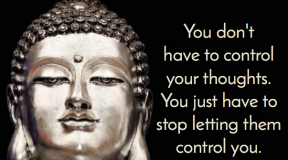
One very useful and important framework through which to interpret psychopathic abuse is the so called Sociopath-Empath-Apath Triad (or SEAT for short). What is this model of and how does it look at the issue of toxic emotional abuse?
The Sociopath-Empath-Apath Triad very accurately describes a method of psychological abuse employed regularly by psychopaths, sociopaths and other toxic characters. It involves the basic method of triangulation, which many people will be familiar with, where the sociopath effectively uses other people as a pawn to play off against their target or empath.
Through miscommunication, lies and other manipulative tactics, the sociopath effectively turns others against their target or at least creates a situation where they do not openly support the target. This adds to the feeling of isolation and helplessness a target can feel, particularly in a work environment, since they feel they are up against not just the poisonous behaviour of the sociopath, but also the apathy and moral indifference of others close to the situation.
This is an extremely common dynamic and adds to the gas-lighting effect that is part and parcel of how sociopaths target their victims. Since the victim remains unvalidated and unsupported, their distress over the entire situation is often vastly increased and this is sadly down not just to the sociopath but the weakness and apathy of the majority of the rest of the human race who are not evil themselves but do not tend to stand up to evil either.
To clarify, throughout this article we are using the terms sociopath and psychopath interchangeably. Whilst there are technical differences between their definitions they make no difference for our purposes here of analyzing the SEAT dynamic, since it is a tactic used by toxic people across the board, whether one wants to define them as psychopaths, sociopaths or something else.
The main book which goes into this SEAT dynamic in detail is Jane and Tim McGregor’s excellent book The Empathy Trap. Their book is a superb resource on sociopaths and toxic, antisocial characters in general and breaks down the dynamic in detail as well as providing some useful real life examples to see how this psychological abuse tactic can play out.
See the video embedded below for an interview with Tim McGregor about his book and the issue of sociopathic abuse in general.
Click here to view The Empathy Trap on the Book Depository (free worldwide delivery).
Defining the Sociopath, Empath and Apath
Let’s look more at this toxic dynamic in more detail, firstly by breaking down what we mean by each of these terms. All three are needed to make up what is referred to in The Empathy Trap as The Sociopathic Transaction – a scenario or situation which the sociopath deliberately manufactures to undermine and target an empathic individual by enlisting the active or passive support of onlookers or apaths.
The Sociopath is the main toxic character here and for this article we can consider them equivalent to a psychopath as well. Characters which fit both descriptions and definitions will readily engage in this tactic so they can be treated as the same for our purposes here. We will stick with sociopath for the rest of this article.
The sociopath is an extremely manipulative, toxic person, devoid of empathy and compassion and with little or no ability to experience emotion. They can give off a superficial or glib charm and very easily take people in with humour, sweet talking or some other manipulative tactic, but they are in reality fake and empty individuals with no real ability to connect.
Most dangerously though they have no conscience and therefore there are no limits as to how far they will go to psychologically target and undermine someone they see as a threat. They do not feel for the suffering they inflict on others and potential targets must understand that with sociopaths they are not dealing with people who are capable of guilt, remorse or shame like normal people are.
The Empath is the sociopath’s intended target and is most often a high quality individual who possesses many of the traits the sociopath doesn’t have. They are usually highly intelligent, empathically tuned in to others, moral, decent, strong people who have principles which they stick to. In a work setting they are the honest, straightforward, conscientious, solid workers who want to do things the right way.
They also tend to be very observant people and this is why sociopaths consider them a threat as they will be the ones most likely to spot and call out unacceptable things the sociopath says or does. They will spot their contradictions and hyprocrises in a way others will not so readily pick up on. They are often intuitive people with a strong sense of right and wrong who will very quickly spot that something is “off” with the sociopath in terms of their behaviour and character.
The Apath is the person or group of people who are “stuck in the middle” to some extent, being neither psychopathic nor particularly strong, moral or observant in the same way that the Empath is. They tend to be the people who “go along to get along” and may on some shallow level realize something is wrong with the sociopath, but are not strong enough to stand up against them or back the Empath up.
Otherwise they may simply be easily influenced people lacking in integrity and self awareness and therefore very easily manipulated and turned against the Empath by the Sociopath. They are not usually intuitive and observant like the empath and therefore do not spot (or else ignore) the glaring red flags the sociopath will give off in terms of manipulative and deceitful behaviour.
Apaths form the bulk of the “masses” or “crowd” from which most of humanity is made up from. They are basically on some core level good but also passive and not particularly courageous or moral in standing up against evil they see being committed against others.
The sociopath could not get away with their abuse without the help of these apaths though and the issue of apathy and moral weakness is something the human race as a whole needs to address. On the micro level it leads to scenarios like the SEAT dynamic; on the macro level it leads to parties like the Nazis getting into power and committing atrocities, firstly against minorities but later against anyone who objects to them at all.

The sociopath-empath-apath triad is often used by toxic characters to isolate a target in a work setting by turning a group against them
The Sociopathic Transaction
Now we have broadly defined the three types of people involved, we can draw out in more detail how the sociopath enlists the collusion of an apath in targeting an empathic individual in what is sometimes called The Sociopathic Transaction.
Again see The Empathy Trap linked above and below, for a detailed breakdown of this. We will break down the main steps in the process here. In short, the entire process hinges on a kind of “selling out” by the Apath, where they make their own life easier in the moment by going along with, or not standing up against, psychological abuse and undermining tactics the sociopath inflicts on an empath.
The dynamic starts when the empath feels obliged to take a stand on something unacceptable the sociopath has done. This could be any one of a multitude of things but here are a few examples:
- A demeaning comment or put down.
- Unpleasant or inappropriate behaviour towards others.
- Negligence of duty in a work environment, or simply not doing something they know is required and should have done.
- Also breaking rules and procedure in order to get a certain result, again especially common in business to where they go to any lengths to “get results” and ingratiate themselves with higher ups.
The empath confronts the sociopath on their behaviour. In response the sociopath shifts blame and attention away from themselves through a number of techniques, such as lying, obfuscation, confusion, blame shifting, projection and so on. The goal is to throw others off the scent of what they have done and divert attention to the empath instead.
The apath completes this transaction by either corroborating the sociopath’s view or else not openly siding with the empath. They allow themselves to be taken in by the sociopath, or else make a cowardly decision morally and choose not to back the empath even though they may see he is right. They don’t want to get in the sociopath’s bad books.
Either way it ends badly for the empath, despite them doing the right thing in exposing something the sociopath has done or said. By colluding with this process, the apath allows the sociopath to walk away scot-free, often shifting the blame onto the empath in the process and making them out to be the troublemaker.
People who have been subject to this kind of dynamic will be familiar with the complete inversion of truth and reality for which sociopaths are known, where they somehow manage to flip everything on their head and shift blame onto others for situations they are responsible for. Under this dynamic people will regularly find themselves apologizing for something which is clearly the sociopath’s fault to begin with!
This is part of the more general tactic of “gas-lighting” that sociopaths and psychopaths love to use, where they chip away at a person’s sense of reality and perception. Twisting situations around and shifting blame onto empathic targets is just another way of doing this. See our article on gas-lighting for more on this.
An Example of the Sociopathic Transaction
The whole dynamic of the sociopath-empath-apath triad and the sociopathic transaction is perhaps better illustrated with an example of the sort of thing that could happen in real life. They are particularly common in work scenarios where the sociopath has more people to play off against the empath. The Empathy Trap contains some more good examples on pages 37-39 especially.
The Sociopathic Transaction – An Example
A Sociopathic shop manager has to cover rotas in his shop for a week when he is on holiday. He knows cover is hard to find in this area and so ideally he should get these rotas completed well in advance when more cover options are available.
However in his laziness he leaves the rotas until the very last minute, when few cover options are left. He “blags” his way to a completed rota by placing his deputy in on several super long, back to back shifts, knowing this is something the deputy would not like and also breaking employment law regarding breaks between shifts.
The empath deputy manager rightly objects to this and the sociopathic manager then rings the apath area manager and paints the deputy as a troublemaker who constantly wants all the rotas changing. The fact that the sociopath’s laziness and lack of proper planning is what created this situation in the first place is glossed over by both the sociopath himself and the area manager.
The area manager himself is slightly wary of the sociopath and realizes his ability to “be clever” and put down people in front of others, and shies away from confronting him on his general laziness and lack of organization and planning.
The apath area manager basically “sells out”, agreeing with the sociopath that the empath deputy is causing trouble with the rotas and therefore demands that responsibility for the next set of rotas are dumped on the empath deputy. The sociopath’s responsibility for creating this whole avoidable scenario to begin with is ignored as the area manager would rather not confront the sociopath. It is easier to dump on the empath.
The empath is left furious at how this whole situation has somehow been turned against him despite him doing nothing wrong. He is now set at odds with the area manager, whilst the sociopathic manager walks away with his hands up: “honestly, look at the problems he’s creating with these rotas now”.
Standing back from these kind of situations, you will notice how the sociopath is a purely destructive personality, seemingly with a wilfull desire and intent to cause trouble for others. There is nothing creative, constructive or positive about the sociopath. They are purely toxic and destructive creatures.
Anything that leads to division, people being set against each other, arguments, stress, anger and other negative emotions is something the sociopath gets a kick out of, especially since it diverts attention more effectively away from themselves. This may seem bizarre to the normal person but it is crucial to understanding the sociopath and that causing trouble and conflict is the raison d’etre of their existence.
The Sociopath Relies on the Apathy of the Masses
Another crucial point to understand about this whole dynamic, which we have raised but need to re-emphasize, is that this whole process could not happen without the help of the apathetic “in between” people who may not be out to target the empath but don’t do much to stand up for them either against the sociopath’s toxic behaviour.
Tim and Jane McGregor accurately sum this up in The Empathy Trap: “The sociopathic transaction relies heavily on the apathy of those close to the event or situation and highlights the importance of the apath in the transaction” (p.37).
The sociopath may use a number of tactics to get the apath on board, such as flattery, bribery, lies, deceit, half truths, mis-communication and so on. They rely on a multitude of methods to draw the apath in and further isolate and target the empath.
In other words, the sociopath could not get away with the psychological abuse they inflict on others without the passive or active collusion of the “masses” or “crowd”; the bulk of people who are not evil but not empathic or strong either and allow themselves to be very easily taken in by the sociopath and do not stand up for or validate the empath’s correct point of view.
Sociopaths and psychopaths are well aware of this fact and take advantage of it time and time again to target their victims. As The Empathy Trap notes, sociopaths rarely ever deviate from this basic S-E-A-T dynamic, simply because they know it works so well and they will get away with it. They know the vast majority of people are easily influenced and will not truly stand up for what is right if it makes their life harder in the present moment.
This has profound implications on both the micro level of individual lives and the macro level of politics and society in general. Apathy seems to be a malaise of the human condition that allows evil to be committed on both a large and small scale. People will no doubt be aware of the Milgrim Experiment, which shows the lengths people will go to in harming others under the guise of simply “following orders”.
The vast majority of people need to come around to the realisation that not all people are good or well intentioned and that “going along to get along” can lead to all kinds of suffering for others down the line. Devious, manipulative people exist and hopefully the free flow of information on sociopathic characters and dynamics such as the sociopath-empath-apath triad can increase awareness of this commonly used manipulation tactic.
Hopefully this blog can contribute towards this. See our Resources page for more books on the subject, our Checklist for spotting sociopathic and psychopathic characters and our Blog for more information and perspectives on psychopathic abuse in the workplace and at home.
The Empathy Trap, available on The Book Depository, is an excellent resource on sociopathy and psychopathy and covers specifically the Sociopath-Empath-Apath Traid and the Sociopathic Transaction in detail, particularly on pages 37-39 of the book. They also go into the tactic of “gas-lighting” in detail and have some excellent, practical steps for identifying and recovering from toxic characters in your life.

EDITOR’S NOTE: I am not trying to beat a dead horse with this article, having previously published two others related to this topic, but in my own personal life I have personally witnessed how destructive and dangerous these people are (see: The Hitchhiker’s Guide To Clown World.) However, I think each article here makes its own unique and important points and they all compliment each other nicely to get a gestalt of what exactly we are dealing with in this yuga.
I have honed my knowledge on cluster B personality disorders over many years of intense study to the point that I can recognize them near instantly, and I see them everywhere in the kali yuga. If you are paying attention to politics, then you now have personal experience with it as well, unaware of it as you may have been. Take the time to learn from other people’s experiences and wisdom on this one, it is not one of those things you want to learn by doing, to put it mildly. You should always be watching these people like a hawk. Namaste
This article was republished from psychopathsinlife.com








3 Comments
Mathew Whitney
(August 1, 2021 - 4:32 pm)Sociopath = Gangstalker = Narcissist = Dick
Apath = NPC = Flying Monkey = Asshole
Empath = Targeted Individual = Supply = Pussy
https://rantichrist.blogspot.com/
Bodhi Mantra
(August 1, 2021 - 10:12 pm)I lol’d ty for this
Leslie Medina
(June 29, 2024 - 5:40 pm)Hi, Neat post. There is a problem along with your website in internet explorer, would test this텶E still is the market chief and a good section of other folks will pass over your magnificent writing due to this problem.